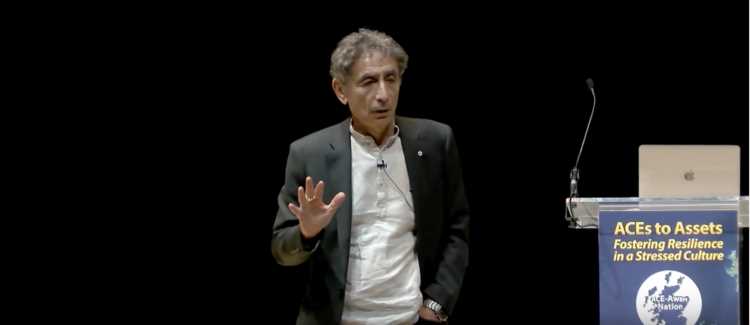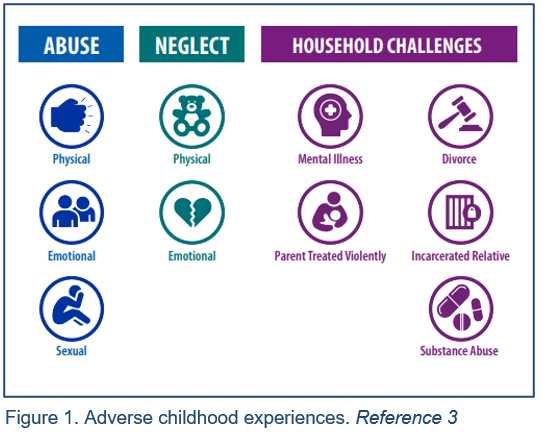
Resilience is a vital trait in today’s fast-paced and demanding world. It allows individuals to bounce back from adversity and thrive in the face of challenges. However, in a culture that is constantly bombarded with stressors, fostering resilience can be a daunting task.
From the pressures of work and school to the constant presence of technology, our society is increasingly stressed. The Aces to Assets approach aims to shift the focus from the negative impact of stress to the positive potential for growth and development.
By reframing stress as an opportunity for growth, individuals can learn to embrace challenges and develop the skills necessary to thrive in a stressed culture. This approach recognizes that stress is an inevitable part of life, but it does not have to define us. Instead, it can be a catalyst for personal growth and resilience.
Aces to Assets emphasizes the importance of building a strong support network and developing healthy coping mechanisms. It encourages individuals to seek out positive relationships, engage in self-care activities, and practice mindfulness. These strategies can help individuals navigate the challenges of a stressed culture and foster resilience.
Understanding Adverse Childhood Experiences
Adverse Childhood Experiences (ACEs) refer to traumatic events that occur during childhood, such as abuse, neglect, or household dysfunction. These experiences can have a profound and lasting impact on a child’s development and well-being.
It is important to recognize that ACEs are not the fault of the child, but rather the result of external factors that they have no control over. Understanding ACEs is crucial in fostering resilience and supporting children who have experienced these adversities.
ACEs can have a significant impact on a child’s physical and mental health, as well as their ability to form healthy relationships and cope with stress. Research has shown that individuals with a higher number of ACEs are more likely to experience a range of negative outcomes later in life, including chronic diseases, mental health disorders, and substance abuse.
However, it is important to note that not all individuals who experience ACEs will have negative outcomes. Resilience, which refers to the ability to bounce back from adversity, can be fostered through various protective factors and assets. These assets can include supportive relationships, access to education and healthcare, and a strong sense of self-esteem and self-efficacy.
In a stressed culture where ACEs may be prevalent, it is crucial to prioritize the well-being of children and provide them with the necessary support and resources to overcome these challenges. By fostering resilience and promoting protective factors, we can help children build a strong foundation for their future and break the cycle of trauma.
Understanding ACEs is a critical step in creating a culture that values and prioritizes the well-being of children. By recognizing the impact of adversities and providing the necessary support, we can foster resilience and help children thrive in a stressed culture.
Impact of Childhood Trauma on Mental Health

Childhood trauma can have a profound impact on mental health. Resilience is often compromised in individuals who have experienced trauma during their formative years. This can lead to difficulties in coping with stress and adapting to the demands of daily life.
The culture in which a child grows up plays a significant role in shaping their response to stress. In a stressed culture, where resources are limited and support systems are lacking, the effects of childhood trauma can be amplified. The ability to foster resilience in individuals who have experienced trauma becomes crucial in such environments.
Aces, or Adverse Childhood Experiences, are events or circumstances that can have a lasting impact on a child’s development and well-being. These can include physical or emotional abuse, neglect, or exposure to violence. Aces can disrupt the healthy development of the brain and affect the individual’s ability to regulate emotions and form healthy relationships.
In a stressed culture, the prevalence of Aces may be higher, further exacerbating the impact of childhood trauma on mental health. Fostering resilience becomes essential in order to mitigate the long-term effects of these experiences.
Resilience can be fostered through various means, including therapeutic interventions, social support networks, and education. By providing individuals with the tools and resources to build resilience, we can help them navigate the challenges that arise from childhood trauma and promote positive mental health outcomes.
It is important to recognize the impact of childhood trauma on mental health and to prioritize the development of resilience in individuals who have experienced such trauma. By addressing the root causes and providing support, we can work towards creating a culture that promotes healing and well-being for all.
Long-term Effects of Adverse Childhood Experiences

Adverse Childhood Experiences (ACEs) can have a profound impact on individuals throughout their lives. ACEs refer to traumatic events that occur during childhood, such as abuse, neglect, or household dysfunction. These experiences can shape a person’s development and have lasting effects on their physical, mental, and emotional well-being.
Research has shown that individuals who have experienced ACEs are more likely to face a range of challenges in adulthood. They may have difficulties forming healthy relationships, managing stress, and coping with adversity. The effects of ACEs can also manifest in physical health issues, such as chronic diseases and a weakened immune system.
However, it is important to note that not all individuals who have experienced ACEs will necessarily develop negative outcomes. Resilience, which refers to the ability to adapt and bounce back from adversity, can play a crucial role in mitigating the long-term effects of ACEs. Building resilience involves fostering supportive relationships, developing coping skills, and creating a positive environment.
By recognizing the long-term effects of ACEs and providing support and resources, we can help individuals develop the assets they need to overcome adversity and thrive. This includes creating a culture that values resilience and fosters a sense of belonging and empowerment. By investing in programs and initiatives that promote resilience, we can help individuals build the skills and capabilities they need to navigate a stressed culture and lead fulfilling lives.
In conclusion, the long-term effects of adverse childhood experiences can be significant, impacting an individual’s physical, mental, and emotional well-being. However, by fostering resilience and providing support, we can help individuals overcome these challenges and build a brighter future.
Building Resilience in Individuals

In today’s stressed culture, fostering resilience in individuals has become more important than ever. Resilience is the ability to bounce back from adversity and adapt to new challenges. It is like a set of aces that individuals can use to overcome difficult situations and thrive in the face of adversity.
Building resilience starts by recognizing the assets individuals already possess. These assets can be physical, mental, emotional, or social. By identifying and leveraging these assets, individuals can develop a strong foundation for resilience.
One way to foster resilience is by developing a positive mindset. This involves reframing negative thoughts and focusing on strengths and possibilities. By cultivating optimism and gratitude, individuals can build resilience and find meaning in difficult situations.
Another important aspect of building resilience is developing a supportive network. Social connections provide emotional support, practical assistance, and a sense of belonging. By nurturing relationships and seeking support from others, individuals can enhance their resilience and cope better with stressors.
Additionally, self-care plays a crucial role in building resilience. Taking care of one’s physical and mental well-being is essential for maintaining the energy and resources needed to navigate challenges. Engaging in activities that promote relaxation, such as exercise, meditation, or hobbies, can help individuals recharge and build resilience.
Lastly, building resilience involves embracing change and developing adaptability. Life is full of uncertainties, and being able to adapt to new circumstances is key to resilience. By cultivating flexibility and embracing challenges as opportunities for growth, individuals can build their resilience muscles.
In conclusion, fostering resilience in individuals is vital in our stressed culture. By recognizing and leveraging their assets, cultivating a positive mindset, developing a supportive network, practicing self-care, and embracing change, individuals can build resilience and thrive in the face of adversity.
Creating Supportive Environments

Fostering resilience in a stressed culture is crucial to building a strong foundation for individuals to thrive. One key aspect of this process is creating supportive environments that encourage growth and well-being. By providing a nurturing and empowering space, individuals can develop the necessary skills and mindset to navigate through challenges and bounce back from adversity.
A supportive environment encompasses various elements, including physical, emotional, and social aspects. Physically, it involves designing spaces that promote relaxation, creativity, and productivity. This can be achieved through incorporating natural elements, such as plants and natural lighting, as well as comfortable and functional furniture arrangements. Providing access to resources and tools that facilitate learning and personal development is also essential.
Emotionally, a supportive environment involves fostering a sense of belonging, acceptance, and empathy. This can be done by promoting open communication, active listening, and creating a non-judgmental atmosphere. Encouraging self-expression and celebrating individual strengths and achievements also contribute to a positive emotional environment.
Socially, a supportive environment emphasizes collaboration, teamwork, and mutual support. By encouraging connection and fostering positive relationships, individuals can feel a sense of community and receive the support they need. This can be achieved through organizing group activities, team-building exercises, and creating opportunities for networking and mentorship.
Creating supportive environments is not only beneficial for individuals, but also for organizations and communities as a whole. When individuals feel supported and empowered, they are more likely to contribute their unique assets and skills, leading to increased productivity, innovation, and overall well-being. By recognizing the importance of a supportive environment and actively working towards its creation, we can foster resilience in a stressed culture and cultivate a thriving society.
Importance of Safe and Nurturing Relationships

In a stressed culture, aces can have a significant impact on an individual’s ability to develop resilience and build assets. However, one of the key factors in fostering resilience is the presence of safe and nurturing relationships.
Safe and nurturing relationships provide a sense of security and support, which is crucial for individuals to navigate through difficult times. These relationships can be with family members, friends, mentors, or even professionals in various fields.
When individuals have safe and nurturing relationships, they are more likely to feel understood, validated, and cared for. This sense of belonging and connection can help them develop a strong sense of self-worth and confidence in their abilities.
Moreover, safe and nurturing relationships can act as a buffer against the negative impact of stress and adversity. They provide a space where individuals can express their emotions, share their experiences, and receive guidance and advice. This support can help individuals build resilience and develop effective coping mechanisms.
Furthermore, safe and nurturing relationships can also serve as a source of inspiration and motivation. When individuals have positive role models and mentors, they can learn valuable life skills and develop a positive outlook on life. These relationships can help individuals identify their strengths and assets, and encourage them to pursue their goals and dreams.
In conclusion, safe and nurturing relationships play a crucial role in fostering resilience and building assets in a stressed culture. They provide individuals with a sense of security, support, and belonging, helping them navigate through difficult times and develop effective coping mechanisms. These relationships also serve as a source of inspiration and motivation, empowering individuals to identify their strengths and pursue their goals.
Education and Awareness for Professionals

In a stressed culture, it is crucial for professionals to have a deep understanding of resilience and the assets needed to foster it. Education and awareness play a vital role in equipping professionals with the knowledge and skills necessary to support individuals in building resilience.
Professionals need to be educated on the importance of resilience and how it can positively impact individuals and communities. They should be aware of the various factors that contribute to resilience, such as social support, coping strategies, and self-care. By understanding these assets, professionals can better assist individuals in navigating and overcoming stress and adversity.
Education and awareness programs for professionals should focus on providing practical tools and techniques that can be implemented in their work. This may include training on effective communication and active listening, as well as strategies for promoting self-care and stress management. By enhancing their own resilience skills, professionals can serve as role models and sources of support for those they work with.
Furthermore, professionals should be encouraged to stay updated on the latest research and developments in the field of resilience. This can be achieved through continuing education programs, conferences, and workshops. By staying informed, professionals can adapt their practices to incorporate new knowledge and approaches, ensuring they provide the most effective support to individuals in need.
In conclusion, education and awareness are essential for professionals in fostering resilience in a stressed culture. By equipping professionals with the necessary knowledge and skills, they can effectively support individuals in building resilience and navigating challenges. Continuous learning and staying informed are key to ensuring professionals provide the best possible care and support to those they serve.
Community Programs and Resources
To address the challenges of fostering resilience in a stressed culture, community programs and resources are essential. These initiatives aim to provide support and assistance to individuals and families, helping them develop the necessary assets to overcome adversity.
One such program is the Aces to Assets initiative, which focuses on building resilience in children and adolescents. Through a variety of activities and workshops, young people are taught valuable skills such as emotional regulation, problem-solving, and healthy coping mechanisms. By equipping them with these tools, the program aims to empower young individuals to navigate challenges and build a strong foundation for their future.
In addition to specific programs like Aces to Assets, communities can also benefit from a range of resources that promote resilience. These resources may include mental health services, counseling centers, and support groups. By providing accessible and affordable resources, individuals in a stressed culture can seek the help they need to develop resilience and overcome adversity.
Community programs and resources play a crucial role in fostering resilience in a stressed culture. They provide individuals and families with the support and tools necessary to overcome challenges and build a strong foundation for their well-being. By investing in these initiatives, communities can create a culture of resilience that empowers individuals to thrive, even in the face of stress and adversity.

I am Patrina de Silva, a psychologist and mental health blogger in Sri Lanka. After obtaining psychology degrees from the University of Colombo and Monash University, I returned home to work as a counselor while also starting the popular blog “Pressy but Happy” to provide advice on psychological issues. Over the past decade, my empathetic articles have made my blog a leading mental health resource in the country. In addition to writing, I maintain a private therapy practice, frequently volunteer counseling time, and conduct seminars, driven by my passion for destigmatizing mental illness and educating the public on the mind-body connection. I strive to be an influential voice in my field through my compassionate approach.
